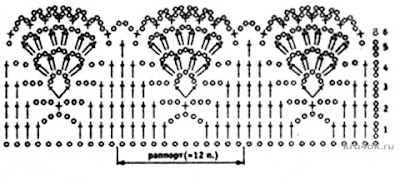all free crochet, crochet baby dress, crochet dress, crochet dress pattern for toddlers, crochet dress patterns free download, crochet dresses patterns, crochet patterns, vintage crochet dress pattern,
Language Of Crochet:
Let's begin with the more common abbreviations used in crocheting:
ch st: chain stitch
dc: double crochet
hdc: half-double crochet
sc: single crochet
sl st: slip stitch
trc: triple crochet
yo: yarn over
tr: treble crochet
sp: space
sk: skip
pat st: pattern stitch
There are other abbreviations you will use, but as a beginner in crochet, these are the most basic abbreviations you will need to memorize.
Before we go into the basic stitches, we'll mention the foundation chain, a key term in crocheting. Just as a house needs a solid foundation, crocheting needs a foundation as well. The foundation chain is defined as a cross-stitched row that serves as the base of your crocheting. It holds all your stitches and all the succeeding rows you will make.
Basic Stitches
Single Crochet-this is the first of the basic stitches. It is the shortest stitch and results in a firm, flat product. To make a single crochet, make sure the front side of the chain is facing you, then insert the hook through a chain, yarn over, pull the loop through the chain, yarn over again, and pull through both loops on the hook.
Double Crochet -as in single crochet, pass the hook from the front to the back of the work through the upper loop of a stitch of the previous row. The thread is caught on the hook and drawn through this loop.
Half-Double Crochet -a cross between a single crochet and a double crochet stitch. Begin with a yarn over, insert the hook into a stitch, yarn over and pull through the stitch; do another yarn over and pull through the three loops on your hook.
Triple Crochet -the last of the basic stitches and also the tallest. To make a triple crochet, yarn over the hook twice; insert the hook into the stitch, yarn over again and pull through the first of two loops (the two closest to the end point); yarn over again and pull through the next two loops. Yarn over one last time and pull through the remaining two loops.
Basic Techniques
Proper techniques begin with how to hold hook and yarn correctly so that you're comfortable with them when working on a project. Let's begin with holding the hook. There are two ways to hold your hook:
ð Hold it as though you were holding a pencil - position and apply a light grip on the hook, or
ð Hold it the same way as you would grip a spoon when mixing something thick.
ð And now the yarn: a basic technique is to make a slip knot, attaching the yarn to your hook. Three simple steps to tie the slip knot:
ð Loop the yarn around your left index finger
ð Let the yarn slip from your finger, holding the loop between your thumb and index finger,
ð With the hook held by your right hand, draw the loop up and around the hook.
ð Then pull each of the ends gently in opposite directions. This will tighten the knot and make it smaller.
Practice, Practice, Practice!
The technique of feeding yarn into your work takes a bit of practice. With your left hand, pick up the yarn, and with the palm of your left hand facing up, thread the yarn through the fingers. Practice holding the yarn so that it “flows” naturally through your fingers. Move your index finger up and down to increase or decrease the tightness of the yarn. As you progress, you will feel a rhythm that works best for you, making the movement more natural and effortless.
Catching the Yarn Technique
This is known as a yarn over (abbreviation: yo). Your index finger plays a crucial role in yarn over movements. Each time you catch the hook, you guide the yarn by moving your index finger up and down. To do a yarn over:
ð Pass the hook under and over the yarn from back to front,
ð If you're having problems wrapping the yarn around all your fingers: instead of wrapping the yarn, just let it flow behind your index finger, in front of your middle and ring fingers and back behind your little finger.








Comments
Post a Comment